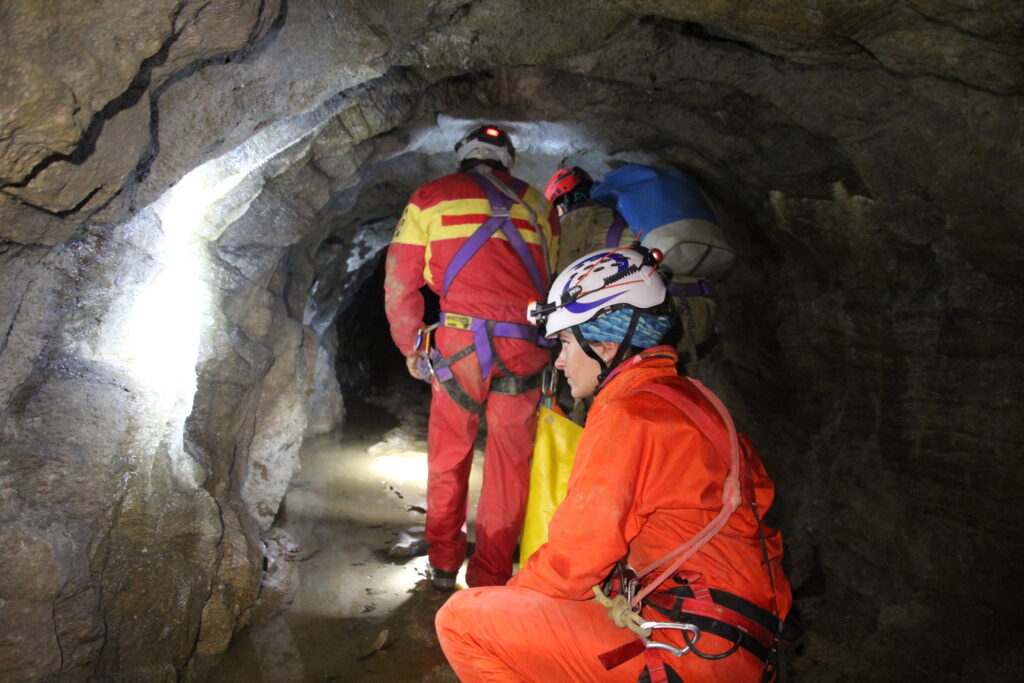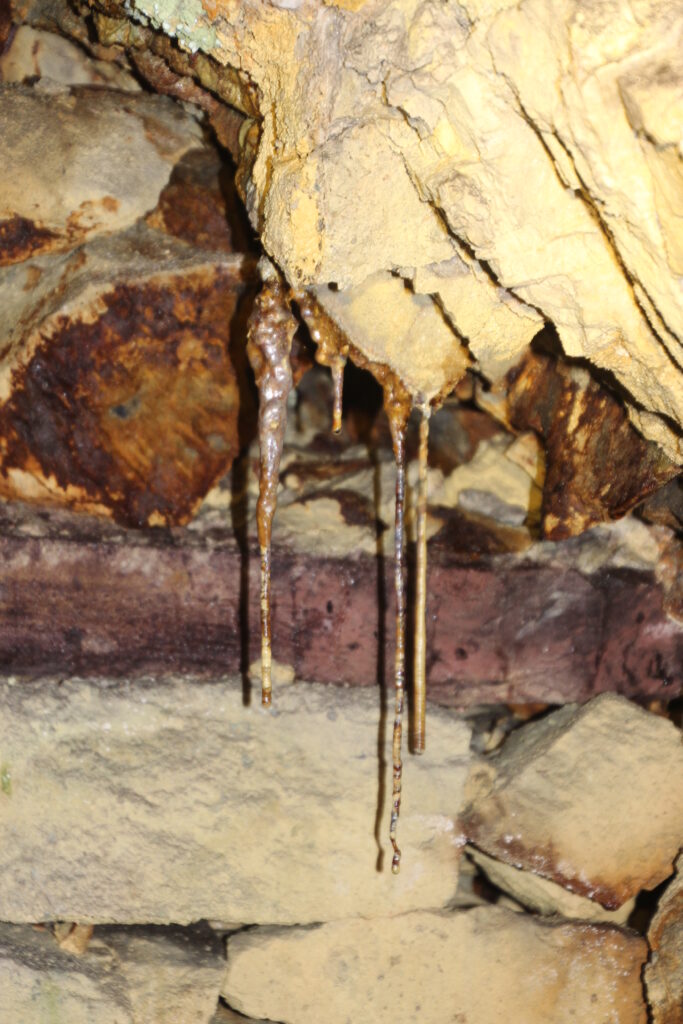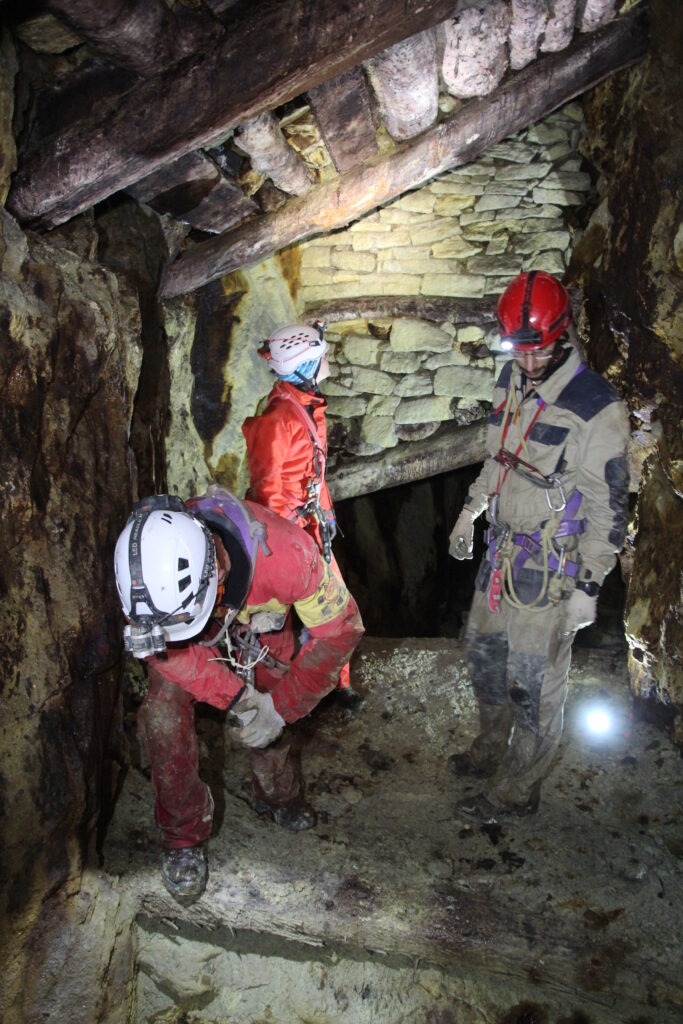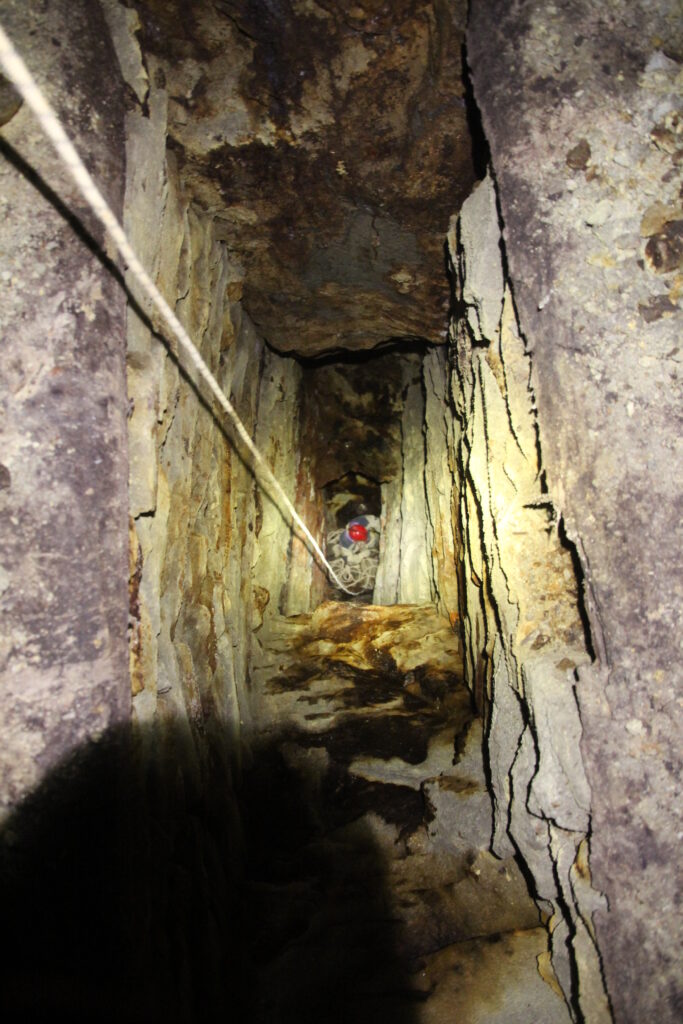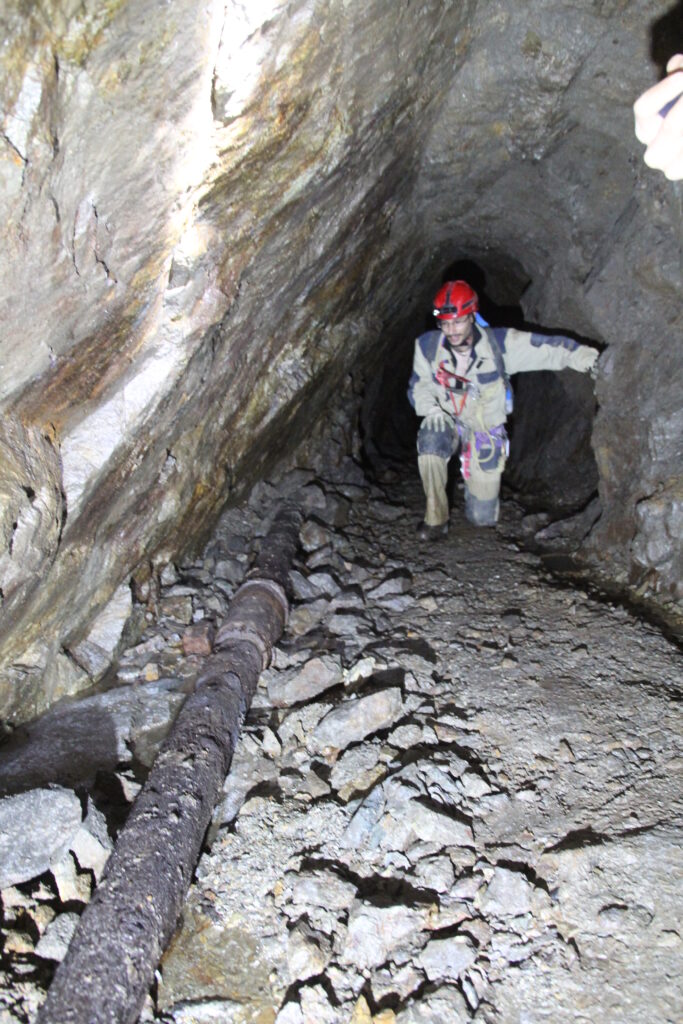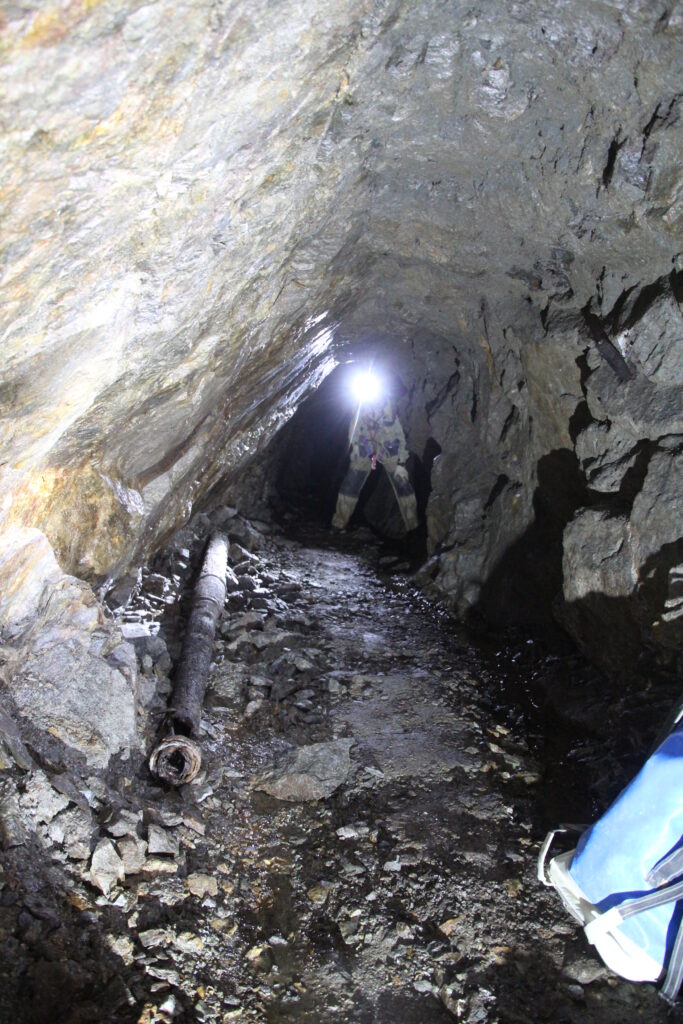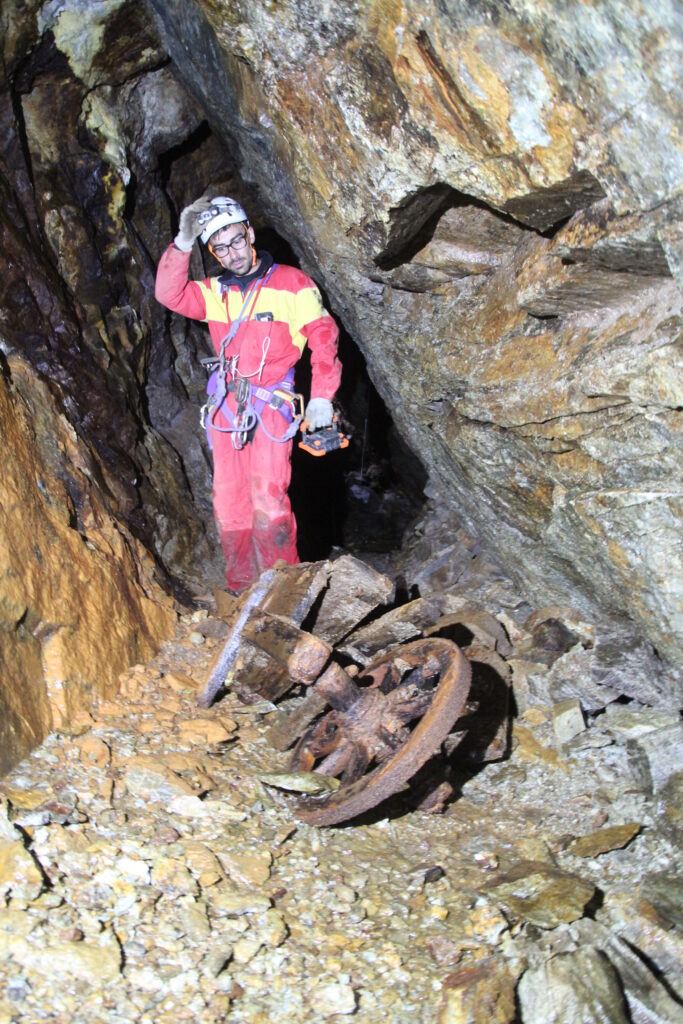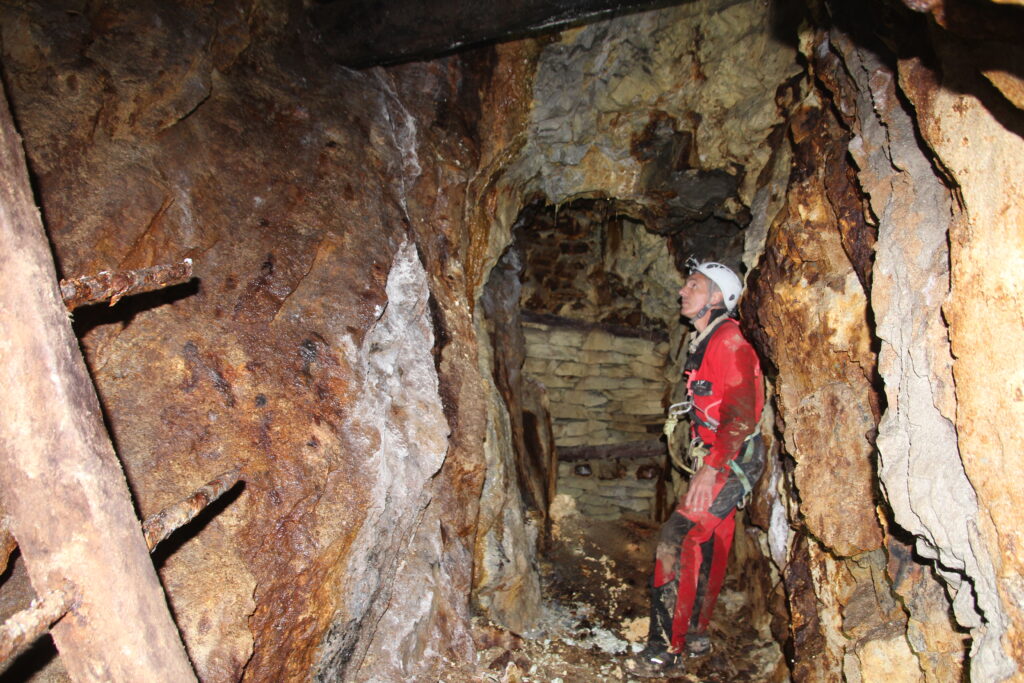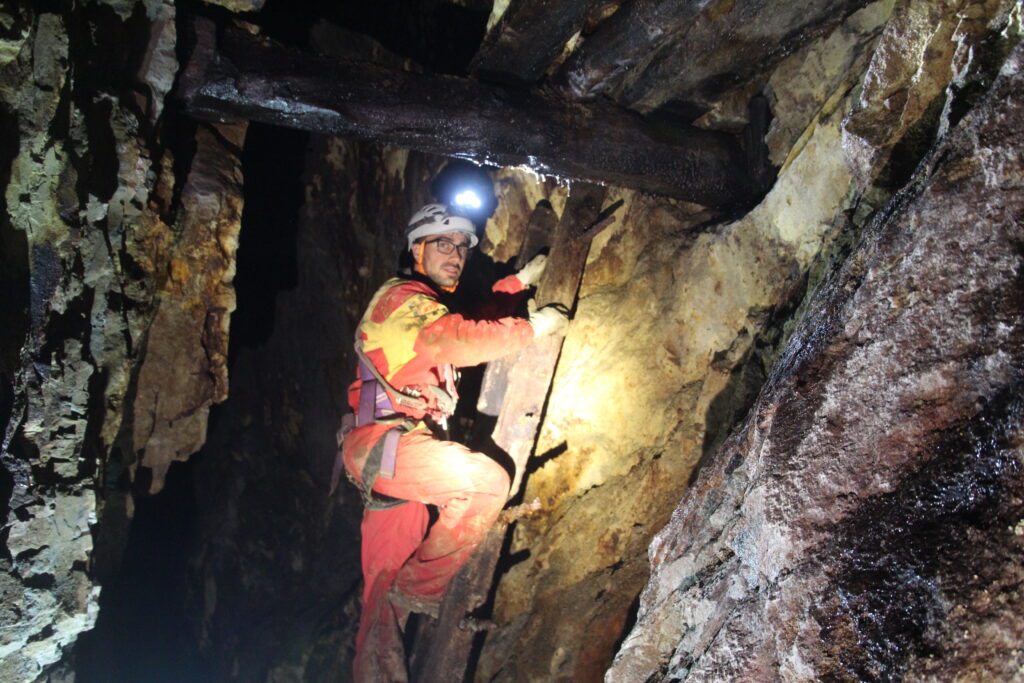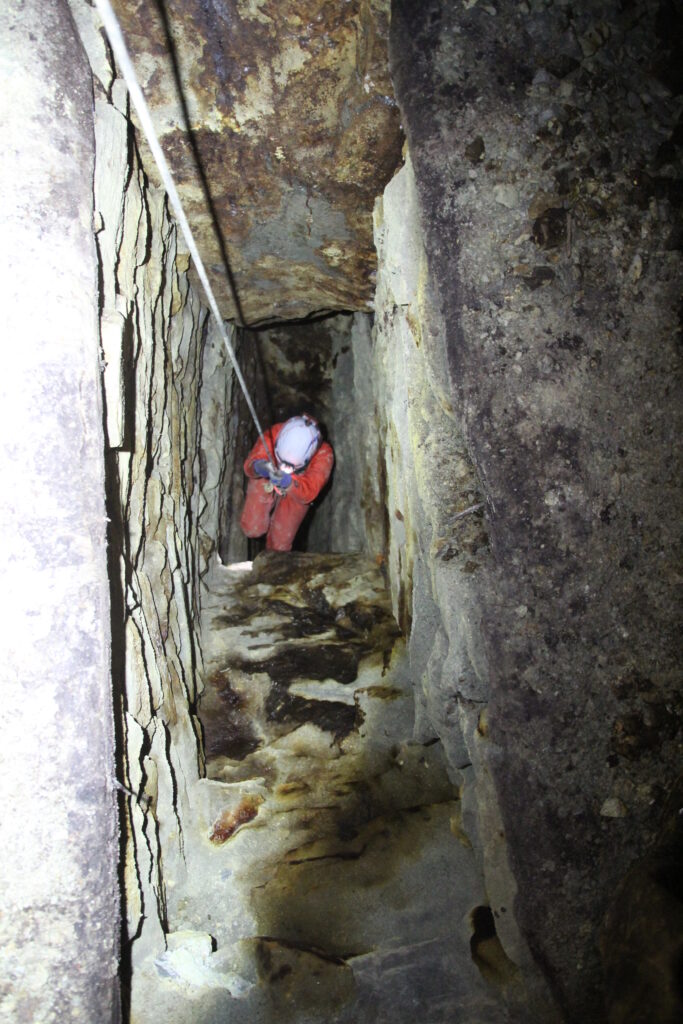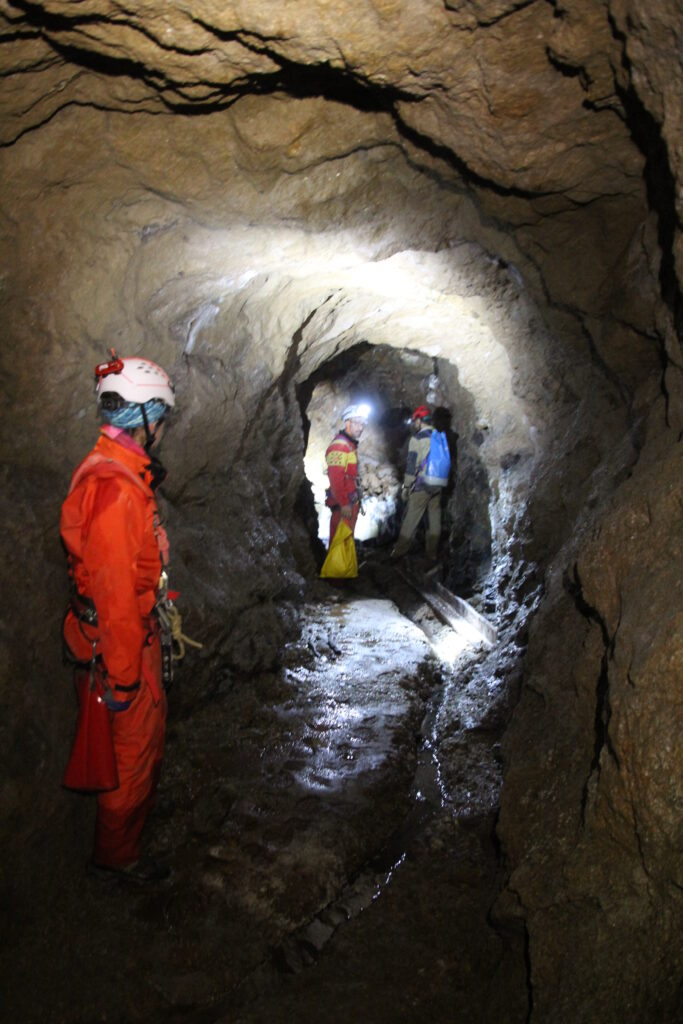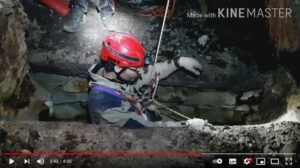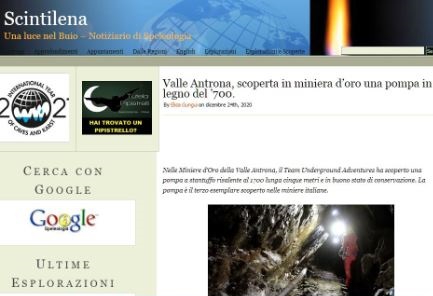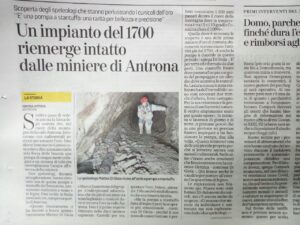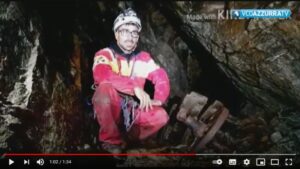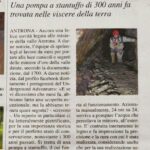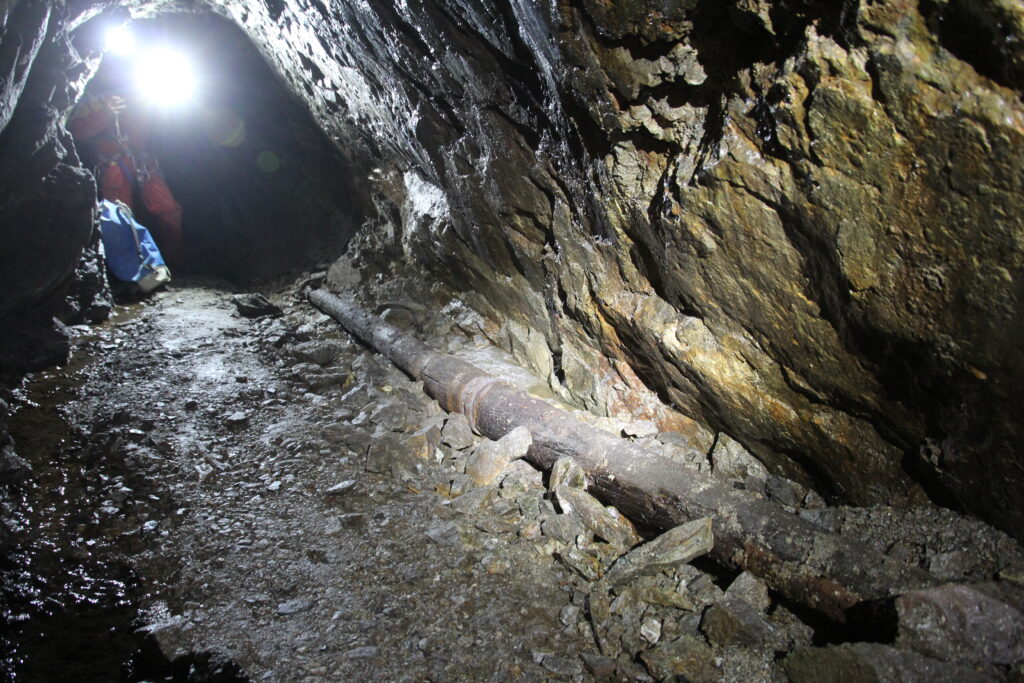
On 12 July 2020 we entered for the first time in one of the oldest mines in the Antrona Valley, whose abatement sites worked on the main lode of the valley.
This lost mine, excavated in rocks that are geologically part of the Monte Rosa massif, dates back to around the mid-18th century, and it is immediately noticeable, once inside, by the size of the tunnels, which are rather low and narrow.
Historical documents spoke fragmentarily of this mine, and the terminology used to describe its peculiarities is now outdated, so much so as to create many problems during our studies.
Thanks to the intersection of information found on five different mining documents, it was possible to trace the position, approximate yes, but also quite precise for the time in which the reports of the excavations were written.
The research then led us to cross a dense wooded area, composed of shrubs about 2 meters high.
No path, no trace, if not some sporadic passage of animals, but only the awareness of having done a good job on historical documents to guide us.
After about three hours of walking we finally arrive at the small square in front of the entrance, preceded by a small javina of waste materials.
It was there, where the 5 documents studied told.
Forgotten and well hidden by vegetation, it awaited us.
The entrance in traverso tour, partially flooded, turned into a direction tunnel after a few meters, before turning again, and then again.
Until the intersection with the two main vein.
In the first the excavation is barely mentioned while in the second, the one probably richest in gold, the excavation is impressive and runs through it all.
While exploring, we notice 2 shafts that lead to lower and probably more recent excavations.
The wooden mezzanines inside appeared in an excellent state of conservation and still bearing despite the past 300 years.
Continuing we encounter wooden channels, another testimony of the era of the mine, as subsequently, metal pipes will be used to convey the water outside.
The biggest discovery, however, was the discovery of the piston pump once used to push water outside the complex.
Made entirely of wood, for its construction two tree trunks were needed, and several metal bands to keep the parts together.
The precision with which it was built is remarkable.
When activated, a plunger slid inside the two hollow trunks, sucking and expelling the water to a higher level. In vertical operation, it was operated manually for 24 hours a day, so that the lower excavations did not flood.
In Italy there are only 2 other examples of pumps like this one.
Below are the articles and videos that talked about this discovery.
Photo Gallery
